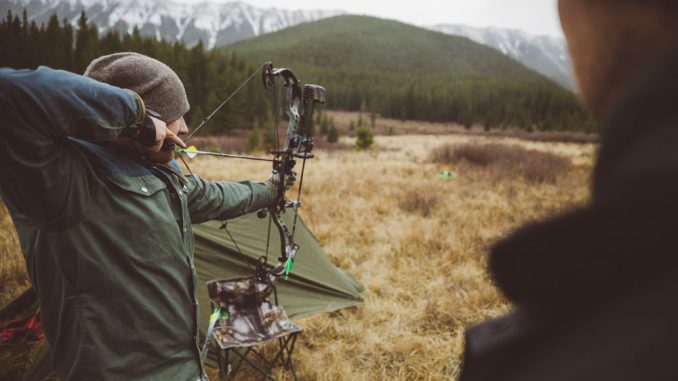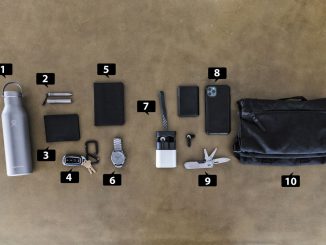
After water and winter shelter, food is often the most essential factor in staying alive, able and healthy. Sure, humans can last awhile without food, but they won’t be very healthy, which means they will be unable to do what is required, especially in a cold-weather survival situation.
There are, of course, varying degrees of situations, starting with the short term (such as an ice storm or blizzard that shuts down power and communications for a few days) and extending to the long term (a hurricane that causes problems for a bit longer and requires government assistance). Scenarios can extend all the way to the SHTF scenario, where help is months or years in coming … if ever.
The first two are no real problem for those who are even modestly prepared. However, this means much more than just having food, water and other supplies cached. Being prepared is even more than skills and knowledge, although both of these are very important. Being prepared comprises the mindset and attitude that no matter what comes along, you are going to be able to handle the situation, whether it means holing up or hitting the road.
1.0 IT’S CALLED “PREPPING”
Being ready means preparation: gathering supplies, skills and knowledge before they are necessary. If the first time you are ever trying to light a fire, identify a plant, hunt, build a snare or plant a garden is after a situation has developed, you are going to have a very difficult time. Even knowing how much food will be needed (that is, calories per day per person) and having plans for whether a situation requires staying put or going elsewhere are crucial for both individuals and families.
1.1 Short-Term Situations
For the average short-term disaster, it is recommended to have at least three days’ worth of non-perishable food and water for each member of a household or group. This can be cans of soup, boxes of pasta or even dehydrated meals and MREs. When added to what is typically stored in refrigerators, it is quite easy to have a week’s worth of food in a house without any rationing; you just need reliable sources of heat and water for cooking.

Pretty much anything can be canned, either using a pressure cooker or a hot-water bath.
1.2 The Right Stuff
1.2.1 Having supplies cached is very important, but it is much more important to have the right foods. The average human needs around 2,000 calories per day to receive the proper vitamins and nutrients to maintain body weight and stay healthy. When it is cold, that number needs to go up to keep the body at the proper temperature, particularly when services, such as electricity and gas, are rendered useless. Calorie needs really go up during activity, such as working to survive during a situation that might require hunting, fishing, foraging and cutting firewood for heat and cooking. All of this needs to be factored in when planning for disasters.
1.2.2 Having enough food and raising calorie counts aren’t really that difficult with some planning. Carbohydrates and proteins are good for both calories and strength. Once what is in the freezer is used or goes bad because the electricity is gone, carbs, such as pasta and grains, become extremely important. Dry beans are also good, because they can be easily stored to last a long time and are heavy in protein. They are also very filling, which helps with attitude (a full stomach helps people feel as if the plan is working).

Jars can be used to store dry items, such as beans, to keep air and pests out of food.
1.3 Storage
There are many ways to store food for the long term before disaster strikes. One of the best is canning. Mason jars can be used to preserve almost anything—from meats and fish to nuts, vegetables, fruits and much more. While many foods need to be canned with a pressure cooker, a hot water bath can be used to seal many other items. Keep in mind that the jars can be washed and reused, but new gasketed lids are required (this is why you should consider obtaining and storing extra lids in case the situation lasts longer than expected). Also, don’t forget that spices can be stored in jars or vacuum-sealed, whole, ground or even in packaging.
1.4 Inventory Management
One key thing to remember is the essential stock rotation method of “first in, first out.” Canned and other packaged goods, both professionally sealed and homemade, will eventually go bad. A simple permanent marker is one of the best tools to ensure a well-stocked and safe food supply. Regardless of where food comes from, always be sure to mark it with the month and year by which it should be used. Consume products accordingly—oldest first. This will reduce waste and make meal-planning less complicated. Be sure to mark containers and not labels, which can fall off. Note that even though Sharpie markers are certified as non-toxic, the company recommends avoiding contact with food and surfaces that come into contact with food.
1.5 Knowledge Is Power
A great way to learn new skills, such as identifying edible plants, is by studying books and participating in training that can teach the skills you are interested in developing. Then, test the new knowledge often and in less-stressful environments and not when they are required for survival. Start with some weekend excursions and work your way up to become an accomplished practitioner. In addition, this allows you to learn what modifications might be needed or whether the concepts will even work in your situation.
1.6 Travel Light
If bugging out is required, lightweight foods that provide the best nutrition are the best items to have in a pack. There are many varieties of survival food on the market, but most are pretty expensive. One type that folks can make themselves is called “pemmican,” which is basically crushed jerky mixed with rendered animal fat. Berries or seasonings are sometimes added for extra flavor. When it’s prepared and stored properly, pemmican lasts a long time in pretty much any condition.
2.0 REFILLING THE PANTRY
Regardless of how much food and other supplies are stockpiled, provisions will eventually run low. To prevent that, you should plan to constantly replenish your stocks by hunting, fishing, foraging and even gardening, because there are ways to grow food, even when it is cold.
You always hear about plans to head to the woods if the end of the modern world comes about (which can be good, if everyone else doesn’t head out with you). The woods, fields, lakes, rivers and oceans are filled with many types of food, but it takes skills to find and use this food. And it won’t last if the area you choose has lots of competition. I suggest that you plan to maintain a basecamp and let others rush off. You can always head out later if that becomes the best option.
2.1 Fat Is Your Friend
Hunting, fishing and trapping are the most effective ways to bring in meat for protein. However, fat is very important when it is cold, and many game animals are limited in fat. Larger animals typically have more fat on their bodies, as do animals that are more efficient at finding food, such as raccoons, porcupines and even skunks. Squirrels and rabbits, two abundant creatures, have very little fat but still provide meat.

A go-bag is truly important, because you might have to hit the trail quickly. Having a certain amount of survival gear at the ready can keep you alive.
2.1.1 Fall is when cervids (deer, elk and moose) go into rut, which means they are moving much more, especially during the daytime hours. However, in a real SHTF scenario, game laws go out the window, so consider getting some night-vision gear for putting meat on the ground and spotting more-dangerous predators. It is also a good idea to have some quieter weapons for taking down game without the world hearing.
2.1.2 A well-placed shot from a .22 LR will take down almost anything from squirrels and rabbits all the way up to a deer. A small-caliber rifle can even be used to take out ducks sitting on the water. However, the best part is that the ammunition is small and light, so you can carry a lot more of it.
2.2 Foraging
If the situation requires bugging out, stored food is going to be somewhat limited to what a person can carry. Foraging is going to be critical in these situations.

Asparagus, broccoli and more are available to eat in the fall. Even cattail roots can be dug around wet areas and roasted to eat.
2.2.1 Unless the situation requires moving fast, consider moving into the woods parallel to the path or road and moving slowly. This allows your group to keep eyes open for game or other edibles. You can even make big loops and come back to the road later. Keep an eye open for abandoned gardens or crop fields as well.
2.2.2 While there are no vegetables that are planted and grown in fall and winter, there are many that are just coming ready, such as broccoli, turnips, green beans and more. You might find some crop operations that will not yet have harvested fields before the survival situation began, leaving large amounts of winter wheat, corn and other fall veggies for the lucky forager. Know where your local farms are located, and have something to barter for what might otherwise go bad in a field.

The woods can be full of game, but getting the right game makes all the difference. When it is cold, if possible, concentrate on game that has more fat, because it is important for staying warm.
2.2.3 A lot of vegetables actually grow in the wild and are available during the colder months—especially green onions, which can also be used to flavor other foods. Asparagus is another choice that can be eaten raw. Even clover, an excellent cool-season grass, can be picked and eaten or steeped for tea well into fall and early winter. And bamboo, or “cane,” as it is known in some areas, is good for much more than just good arrows. Younger shoots can be eaten raw but are typically better if boiled for at least 20 minutes. Cattail roots can be dug for food, even when it is very cold and frozen.

An old-fashioned root cellar can be used to store all kinds of food and can be built fairly easily.
2.2.4 Native Americans were the first to discover that acorns can be utilized as food. While most acorns must be leeched, either via boiling or several changes in water, they are still one of nature’s best foods, because they can be boiled and eaten or ground up for gruel or to thicken soups. They also make a decent flour if roasted and ground, and they can be gathered green and allowed to ripen for later use. Even better: Anywhere there are acorns, there will be wild game.
3.0 STORE IT
Whether you have enough food to last awhile or are working to build your supply, food storage will always be important. Here are some ideas for how to store items six months or a year after a survival situation strikes.
3.1 During cold winter weather, perishables and meat can be stored outside, as long as they are protected. Shaded outbuildings, cellars, smokehouses and other similar places can keep food preserved, especially meats that have been cured with salt or smoke. Food caches can even be wrapped and hung in a tree. The only problem is that they might not be quickly accessible if you need to get out fast.

Just about any fruit or vegetable can be dehydrated for storage. These lightweight items make great snacks and are excellent for bugging out.
3.2 Almost every type of meat or fish can be dried in the sun or smoked and eaten later, which is the basic idea of jerky. Just slice meat very thinly and lay it out on racks to dry in the sun. Smoking can also be used to speed up the process, and it also adds taste. Once the meat is dry, pulverizing it and adding rendered fat yields pemmican, which can last for years.
3.3 Fruits and vegetables can be dehydrated via low heat or the sun to make them last much longer. Dehydration reduces their weight, allowing more to be carried if needed. These can then be munched on the go or added to soups, stews or other dishes.
3.4 Buckets can be one of the best tools to have in any situation. They can be used to carry important items, such as food and water, and one with a good lid can even store food for a while. Buckets are particularly good if you are storing foods in root cellars; they can keep contents organized and free of dirt and moisture.

A standard pressure cooker can be used in any environment that can provide enough heat to build up pressure.
3.5 Depending on where you live and the severity of your winter weather, the temperature of the earth 4 to 5 feet beneath the surface can be ideal for storing food in the winter. This is one of the best ways to build a makeshift “refrigerator” to store food. Be sure to line it for insulation; also add a secure door. There is a variety of options for building root cellars that can be used year-round. With a little investigation, you’ll be able to determine which one is right for you.
3.6 Everyone loves the new Instant Pots and programmable pressure cookers, but having an old-fashioned pressure cooker and knowing how to use it can be a blessing. Not only can it be used to can meats and vegetables, it can also tenderize tough pieces of meat and make them flavorful with fewer spices.
3.7 While pastas, beans and rice can last a long time, the packaging these items come in is often not good for extended storage. Plastic bags and cardboard boxes can get wet and won’t stop insects from getting in and ruining the contents. Consider swapping food to jars or other sealed, air-proof containers.
4.0 MAKING IT PALATABLE
Even with plenty of food, there are many other factors to consider, such as the processes of cooking food, sterilizing water and heating shelters. In some situations, your heat source can multi-task, but it is best to have multiple methods for everything, especially cooking and heating in the winter.
4.1 The blue flame of a gas grill is a great way to cook, but eventually, gas supplies will run dry. That’s when other sources must be utilized, such as charcoal and wood. Some benefits of a gas grill are that it can run easily in the short term, and the guts can be removed to allow the use of other fuels for your fire. Charcoal grills or even a grate over a firepit work too.

Cooking outside over a fire requires only a little bit of ingenuity. Grills can be used with charcoal or wood, and even throwing a grate over a few rocks works well.
4.2 While there should be numerous containers available for cooking, there might come a time when ingenuity will be required. Those without a pot or similar vessel can actually cook many types of food by wrapping it in clay and burying it in coals. Another option is to add heated rocks (note that river rocks can explode if they’re heated in a fire!) to buckets or skins holding liquid or stuffing them into game to heat your meal.

Buying spices in bulk saves money in the long run, and, if stored properly, they can last a long time.
4.3 Spices can be expensive, but obtaining them in bulk reduces the cost and allows them to be stored in a variety of ways suitable for using the “first in, first out” method to keep them fresh. One time-saving idea is vacuum-sealing spices with potential meals (think cayenne pepper, thyme, sage and parsley sealed with red beans and rice; or combine powdered cheese, pasta and possibly instant milk for a great mac and cheese mix).
Garlic powder, dried onions, dill, lemon pepper and other seasonings are much cheaper in bulk and last a long time if stored properly. Consider breaking large packages of spices into smaller sealed baggies so the bulk of your seasonings will remain sealed and stay fresh longer.

You should always have plans for both staying put and bugging out, along with the knowledge of how to use your gear if you have to hit the trail.
4.4 Salt is probably the most important seasoning out there, particularly to preppers, because it can be used for more than just making food taste better, such as for long-term preservation. Salt can be obtained in a variety of ways, including from natural deposits and from seawater. For example, hanging a cup by a string from the knob of an overturned pot lid can provide both salt that is left after boiling seawater and freshwater collected from the condensed steam coming from the boiling water.
Editor’s note: A version of this article first appeared in the Prepper Fall, 2018 print issue of American Survival Guide.





Be the first to comment